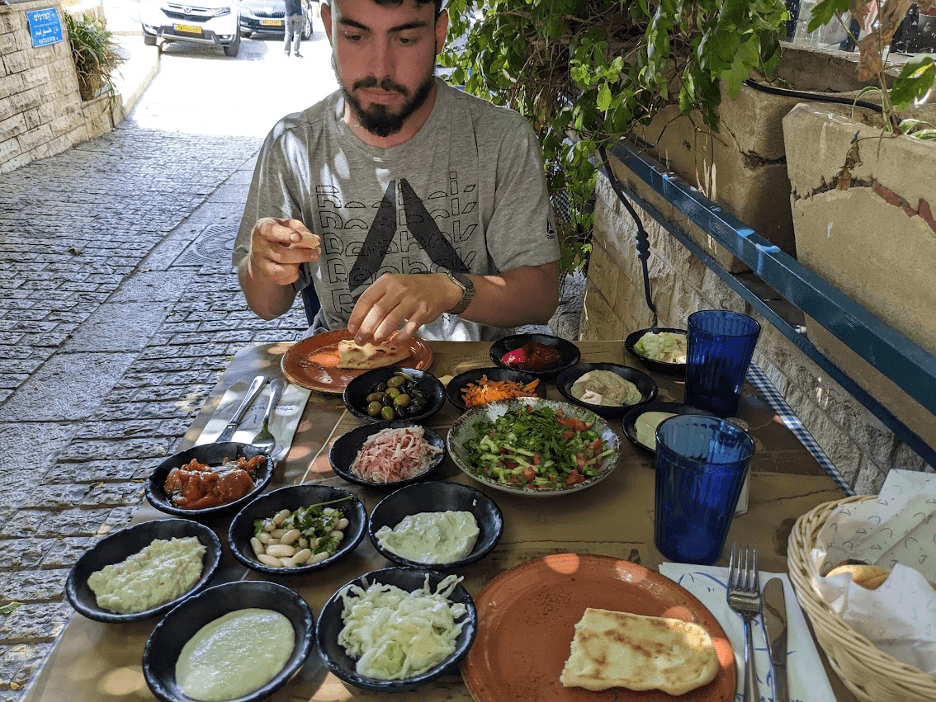Onward Israel Cincinnati 2023 Week 3:
Date: 07-06-2023 | Category: Blog,For Job Seekers | Reading Time: 5 Minutes
At this point, I feel I speak on the behalf of everyone when I say we’ve found our respective rhythms here in Israel. Some of us are in love with the work we are doing and the friends we are making, others love the food we are eating and the new places we are visiting, and the rest perhaps love the simultaneously chaotic and relaxed nature of Israeli life. I feel these are some of the things that we are coming to love about the nation of Israel as a whole.
This past Thursday, we took another day trip, this time to the south! Our first stop was a moshav (an Israeli agricultural settlement) named Talmei Yosef or “The Salad Trail”. Talmei Yosef sits approximately three kilometers east of the Egypt border and equally as far south from the Gaza border (I.e. in a less than ideal location). The settlement was founded by Israelis who were pushed out of the Sinai Peninsula after the 1979 Egypt-Israel peace treaty was signed, as the treaty stipulated that Israel would cede Sinai to Egypt and therefore, relocate the Israelis residing there within the newly defined Israeli border.

The keen among you have probably thought to yourselves, “Wait, if they are three kilometers from Egypt and Gaza, aren’t they in the desert? How could a moshav possibly be successful in the desert? You can’t grow crops in the sand!” This is a prime example of Israelis finding a way to make the seemingly impossible, possible. How did they do it? Surface drip irrigation, an Israeli take on classical drip irrigation that allows for the incredibly successful growth of vegetable crops in non-fertile environments like the desert. The technology was first prototyped in 1959, but was more fully developed and implemented a couple decades later. This allows the moshav to grow an abundance of beautifully fresh cucumbers, tomatoes, carrots, etc. so much so in fact, the area leads Israel in the quantity of vegetable crops grown.
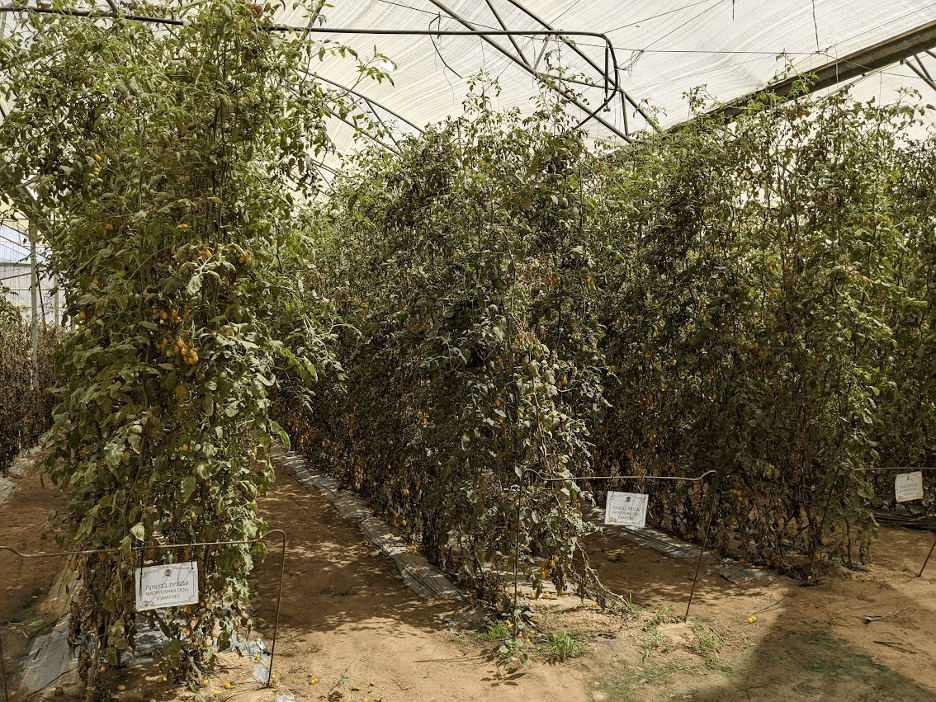
During our visit, we were shown around the moshav and educated on how they combined the surface drip irrigation system with fine mesh greenhouses and bees to make the best environment for these crops to grow. The fine mesh serves two purposes; to keep parasites out of the area and away from the crops as well as to keep the bees in. The bees are present to pollinate all of the crops, otherwise all of the other efforts would be for naught. Side note: the bees don’t sting!
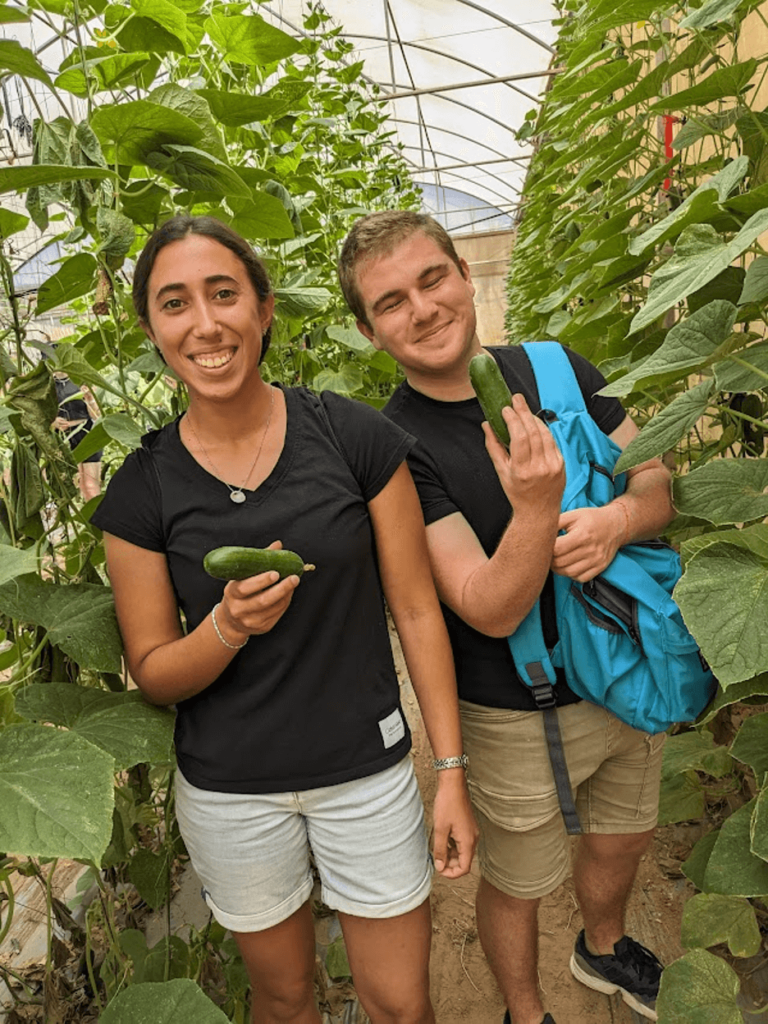
Finally, the owner of the farm, Uri Alon, explained to us that out of all of the struggles the moshav has to overcome, parasites, the desert heat and sand, and the lack of water, the biggest struggle that the moshav faces is rockets from Gaza. The unfortunate reality of those who live within a seven kilometer radius of the Gaza border is that rockets can rain from the sky at any point in time. The scariest part is from the moment the rocket is launched, there is a five second window to get to cover or pray the rocket won’t hit you, your family, or your friends. How dreadful. Fortunately with the implementation of the iron dome in 2011 and its technological advancements since, the rockets are mostly countered in the air by more sophisticated Israeli missiles, drastically decreasing the amount of rockets that hit the ground and the amount of lives lost to those rockets.
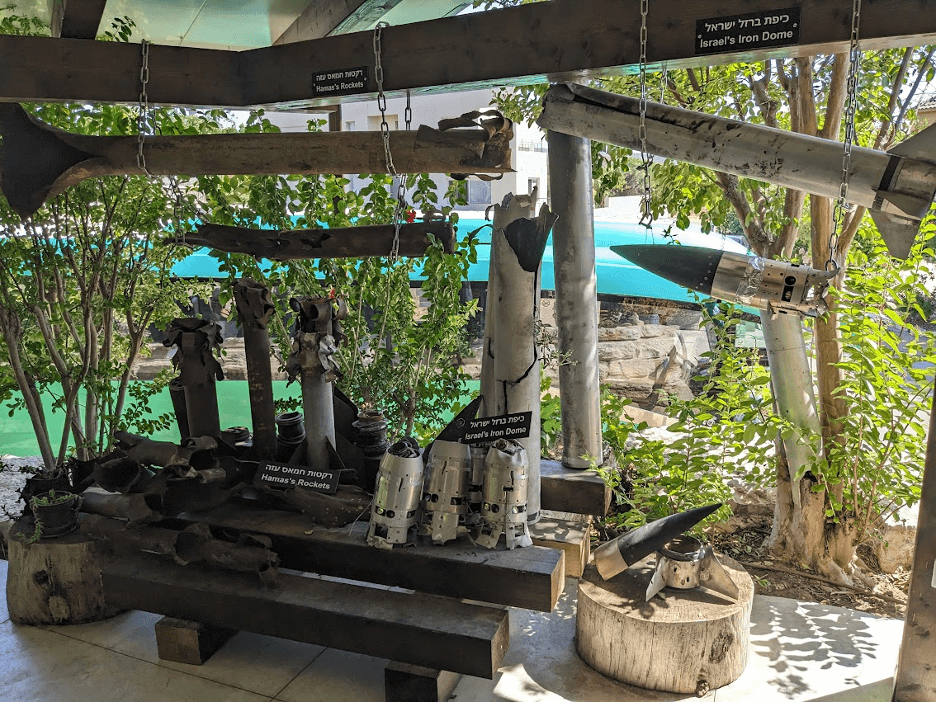
We rounded off this trip with a visit to “Path to Peace” and the easternmost point of the Gaza wall. In the company of “Path to Peace”, we were told about life in the area before and after the Iron Dome, some of the perspectives of those who live there, and the common sentiment shared; the desire for peace. Tsameret Zamir, the founder of Path to Peace aims to make the sentiment known by sharing her experiences as well as decorating the wall with pro-peace messages in Hebrew, Arabic, and English. Although the conflict is complex and no one has a clear cut answer, it’s clear that the desire for peace is ever present and strong.
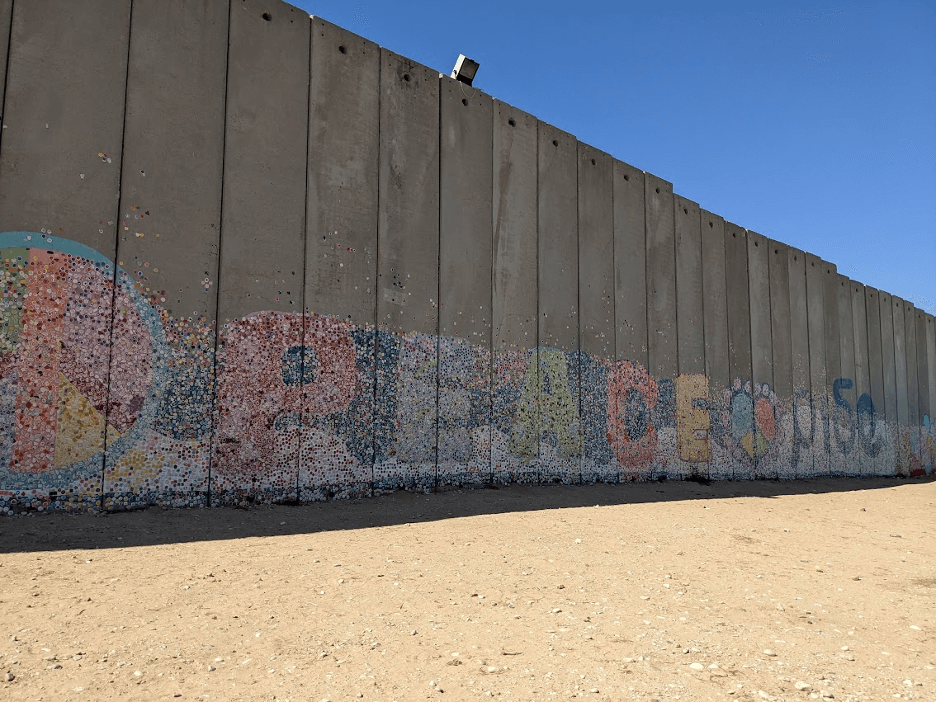
Food Corner:
On a substantially lighter note, it’s time to cover some good food!
Shabtai Hayafe
One of my favorite “styles” of eating is called meze, which simply put is a multitude of small plates, typically including hummus, babaganoush, tahini, tabbouleh, olives, pickled vegetables, etc., served with pita bread. Shabtai Hayafe in Jaffa delivers just that for a reasonable price, with the added bonus that it’s all you can eat. Typically meze isn’t all you can eat, but the prices per plate are usually low so you can pick and choose what you want and how much you want. It’s a very enjoyable style of eating as it provides a lot of flavor variety as well as a light and healthy dining experience, so you feel amazing afterwards (nobody likes to feel bloated after a meal).
